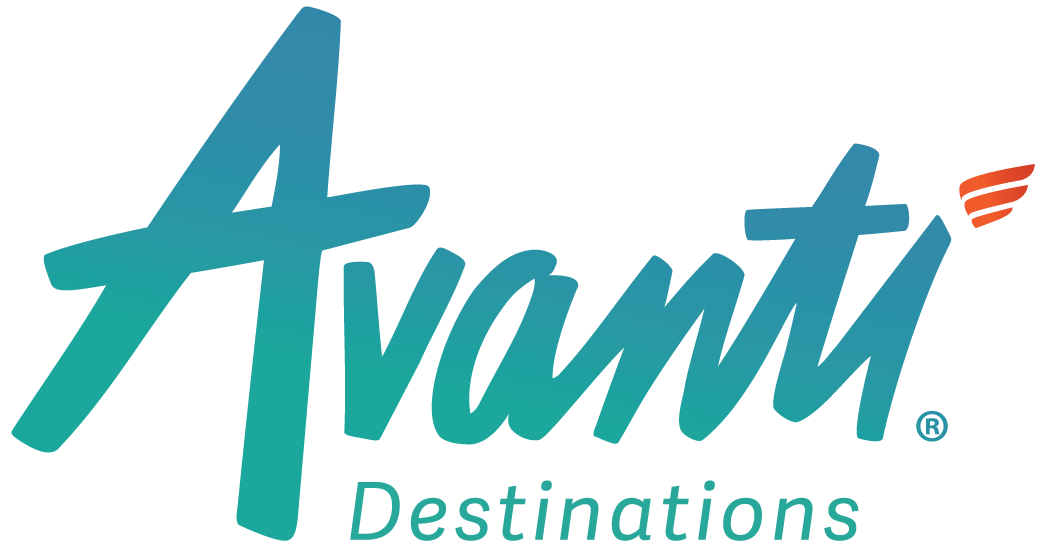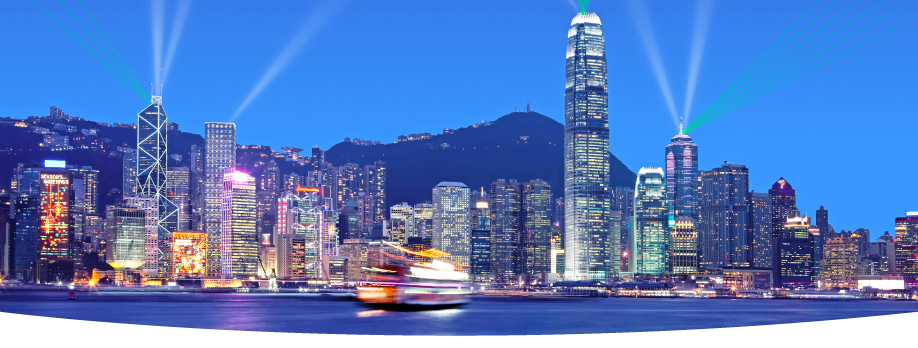

Avanti Journeys -
Deluxe Cultural Wonders of Hong Kong and Japan:
Hong Kong, Tokyo, Hakone & Kyoto
Deluxe Cultural Wonders of Hong Kong and Japan:
Hong Kong, Tokyo, Hakone & Kyoto
Immerse yourself in the diverse cultures Hong Kong and Japan. Experience the dynamic city of Hong Kong with its towering skyscrapers meshing comfortably with ancient traditions. Then sample some of Japan's cultural icons; Tokyo, the energetic capital mixing glittering neon with world-class museums; Kamakura, a resort town amid beautiful mountains and beaches; Hakone, replete with natural wonders including Mt Fuji; and Kyoto, Japan's spiritual and cultural capital with over 1800 temples and shrines.
ACCOMMODATIONS
•3 Nights Hong Kong
•3 Nights Tokyo
•3 Nights Tokyo
•1 Night Hakone
•3 Nights Kyoto
INCLUSIONS
•Private Arrival & Departure Transfers per City
•Private Transfer from Tokyo Hotel to Hakone Hotel with Mt Fuji National Park Day Tour enroute via Public Transportation
•Private Hong Kong Living Culture Tour
•Symphony of Lights Cruise
•Private Transfer from Tokyo Hotel to Hakone Hotel with Mt Fuji National Park Day Tour enroute via Public Transportation
•Private Hong Kong Living Culture Tour
•Symphony of Lights Cruise
•Private Lantau Explorer Tour
•Private Tokyo Highlights Morning Half Day Tour
•Private Kamakura Full Day Tour
•Private Discover Kyoto and Nara Full Day Tour
•Private Afternoon Tea with Geisha from Kyoto via Taxi
•Green-Class Rail between cities plus seat reservations
•Private Tokyo Highlights Morning Half Day Tour
•Private Kamakura Full Day Tour
•Private Discover Kyoto and Nara Full Day Tour
•Private Afternoon Tea with Geisha from Kyoto via Taxi
•Green-Class Rail between cities plus seat reservations
•Air LAX to Hong Kong, Hong Kong to Tokyo & Tokyo to LAX*
•Green-Class Rail Tokyo to Hakone, Hakone to Kyoto & Kyoto to Tokyo Plus Seat Reservations
•Daily Breakfast
•Green-Class Rail Tokyo to Hakone, Hakone to Kyoto & Kyoto to Tokyo Plus Seat Reservations
•Daily Breakfast
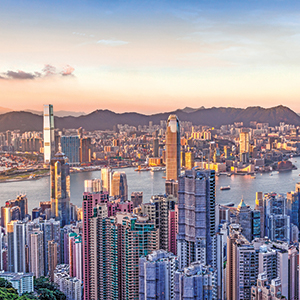
Arrive Hong Kong:
Upon arriving at Hong Kong Airport, meet your English speaking guide for your transfer to your hotel. The remainder of the day is free to rest or explore your surroundings.
(Accommodations, Hong Kong)
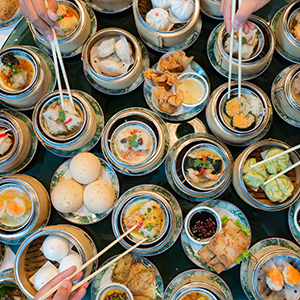
Hong Kong:
Hong Kong is a kaleidoscope of life, a sophisticated fusion of East and West, a city of diversity where new and old meet at every turn. Today you will discover how traditional Eastern values live in harmony with the fast-paced Western influences in metropolitan Hong Kong.
Start the day with a slow motion tai chi class. During the hour-long lesson along the Tsim Sha Tsui waterfront, enjoy fantastic views across Victoria Harbor to Hong Kong Island. Continue on to a tea house where you will learn about tea and the intricate rituals involved in drinking it. Next you will have the chance to sample a traditional Dim Sum meal, Cantonese cuisine at its best! Created from the freshest local ingredients by a team of regionally renowned chefs.
The final stop is to enjoy a foot reflexology session, which involves applying focused pressure to certain known reflex points located in the foot that correspond to certain other areas in the body so as to cure or prevent disease. It's based on the premises that our nerve zones or reflex points go from the bottom of our feet to the top of our head, encompassing all vital organs on the way. The remainder of the day is free for independent sightseeing or perhaps an early dinner, as your Symphony of Lights tour will begin in the evening.
Board the authentic Chinese sightseeing cruise boat as she sails around the Victoria Harbor, one of the world's most impressive natural harbors. At night time, the spectacular Hong Kong's skyline on both side of the harbor will fire your imagination as the dazzling neon cityscape emerges. The synchronized 20-minute Symphony of Lights display depicts the growth of Hong Kong from a sleepy fishing village to dynamic world city it is today. Enjoy uninterrupted view of the dazzling show with unlimited drinks on board for an unforgettable Hong Kong by night.
Note: Guests will need to make their own way to the pier, and the hotel can arrange a taxi transfer. After the 90 minute cruise, one can take a taxi back to the hotel or choose to have a late romantic dinner with restaurants offering million-dollar views of Victoria Harbor.
Note: This tour is subject to weather conditions and sightings cannot be guaranteed.
(Breakfast & Accommodations, Hong Kong)
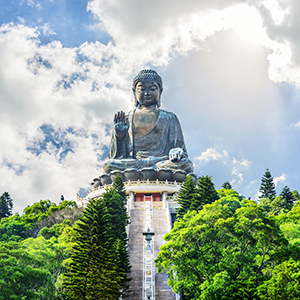
Hong Kong:
After breakfast, meet your guide for an exhilarating tour of Lantau Island. This enchanting island is almost twice the size of Hong Kong Island and is one of the best loved outlying islands. The island is known for its unspoiled countryside, virgin hills and lush green valleys. With the new development of the Ngong Ping Cable Car and Ngong Ping Village, the island has become a new attraction in Hong Kong. En route to Lantau Island, you'll pass the famous Tsing Ma Bridge; an engineering marvel, and known as the longest road/rail suspension bridge in the world. You'll then hop on the Ngong Ping Cable Car, Hong Kong's latest attraction that features a stunning 3.5 mile cable car ride up a mountainside on Ngong Ping 360. The 22 minute journey offers breath-taking panoramic views encompassing the airport, South China Sea, lush mountains and fishing village, and the awe-inspiring Giant Buddha statue. The cable car takes you to the culturally themed Ngong Ping Village where you will have the opportunity to visit the world's tallest outdoor bronze statue and explore the famous Po Lin Monastery nearby. The Po Lin (Precious Lotus) Monastery was built by three monks and was originally called Da Maopeng until 1924. It's home to a huge bell that is rung 108 times per day to relieve 108 vexations. Returning to your hotel in the late afternoon, relax before dinner on your own this evening.
(Breakfast & Accommodations, Hong Kong)
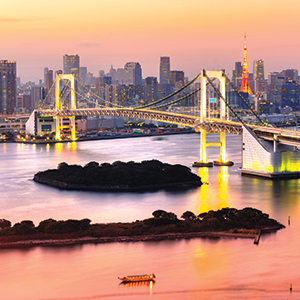
Hong Kong to Tokyo:
Tokyo awaits! After breakfast, a private transfer to the airport for your flight to Japan's capital, followed by a private transfer to your hotel. The remainder of the day is at your leisure and dinner will be on your own this evening.
Note: Greetings are important in Japan, where the culture is defined by politeness and formality. Although English is increasingly spoken at restaurants in Tokyo, it is still far from common. A simple konnichi-wa (good day) or konban-wa (good evening) will help put your hosts at ease. A few basic phrases go a long way, so practice saying excuse me (sumimasen), please (kudasai), and thank you (arigato gozaimasu).
(Breakfast, Hong Kong; Accommodations, Tokyo)
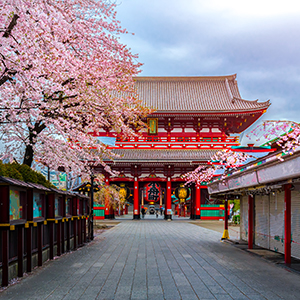
Tokyo:
Your day begins with a half day tour of this fascinating city with a local guide by private car. We'll begin with a visit to the outside of the Imperial Palace, home of Japan's Imperial Family. Next is Asakusa, Tokyo's old town where you can soak in the atmosphere of the Tokyo of old. We'll stop at Sensoji, Tokyo's oldest temple and wander down Nakamise, a shopping street that has been providing temple visitors with a variety of traditional, local snacks and tourist souvenirs for centuries. We'll drive across town to Meiji Shrine, a shrine dedicated to the deified spirit of Emperor Meiji and a popular place for traditional Japanese weddings. If time permits, you can take a walk down Omotesando shopping street, a broad tree lined avenue home to the flagship stores of the world's top fashion brands. Returning to your hotel, the afternoon is free for independent sightseeing*.
*Using public transit in Tokyo is very easy for the English speaking traveler. Most subway stations have signs using the Latin alphabet (i.e. Shibuya, Omote-sando, Roppongi, Ginza, etc). The lines are color coded just like other subways so it's very easy to get around. If you are taking a taxi, your hotel can provide a card with their address in Japanese.
(Breakfast & Accommodations, Tokyo)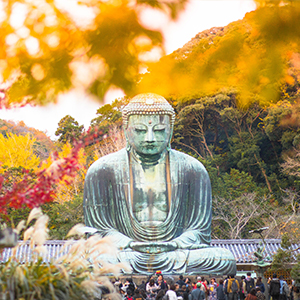
Tokyo:
Have a hearty breakfast as today you'll have a full day tour of Kamakura. In your private car, your guide will provide details about this laid-back resort town. Kamakura is the former de facto capital of Japan during the Kamakura Period (1185-1333). At that time Kamakura was the largest city in the world, however the Kamakura of today is a small, sleepy seaside town with numerous temples, shrines and other attractions. You'll visit Kotokuin Temple, home to the Daibutsu, a giant bronze Buddha that stands (or rather, sits) 13.35m high. Hasedera Temple is a temple of the Jodo sect, which is most famous for its statue of Kannon, the goddess of mercy. The statue shows Kannon with eleven heads, each representing a characteristic of the goddess. The 9.18 meter tall, gilded wooden statue is regarded as one of the largest wooden sculptures in Japan. The Tsurugaoka Hachimangu Shrine is the spiritual heart of Kamakura and one of its most popular attractions. The shrine was originally founded by Minamoto Yoriyoshi in 1063, then enlarged and moved to its present site in 1180. The shrine was dedicated to Hachiman, the Shinto god of war and patron of the Minamoto family. Your day will end with shopping for local souvenirs and delicacies in the famous Komachi Street before returning to your hotel.
(Breakfast & Accommodations, Tokyo)
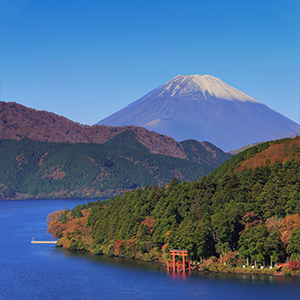
Tokyo to Hakone:
After breakfast and checking out of your hotel, we'll leave Tokyo behind to make a journey to Hakone, the gateway to Mt Fuji and surrounding national park. Your local guide for the day will accompany you on a Shinkansen from either Tokyo or Shinagawa station.
To explore the National Park, you can take advantage of the numerous forms of transport on offer. First, you'll make your way by road to Choanji Temple. This quiet, little-known corner of the area has a history stretching back to the 14th Century and features pleasant walking trails threading through a quiet grove. What makes this temple unique is the two hundred-plus rakan statues (statues of Buddhist disciples) scattered across its grounds. It is one of the most extensive and unique collection of rakan in Japan and it is easy to get lost in the whimsical, human-like quirks of each statue.
Next, you will travel by water. Jumping on a stylish cruise boat, you will glide across Lake Ashi. You will be able to see Mt Fuji from the lake if the weather is clear. You'll next make your way up the Komagatake Ropeway. Again, if the weather is on your side, you can enjoy views of Mt. Fuji on the right-hand side of the ropeway. The ropeway takes you to the summit of Mt Komagatake, from which you can see amazing panoramic views of Lake Ashi, Hakone and Mt Fuji if you are lucky. Heading down the ropeway, you will pick up a cruise again across to Sekisho-Ato, which was once part of Hakone's old town.
After lunch (not included) and a stop by a local craft shop selling puzzle boxes, a local specialty, you will explore the area as those hundreds of years ago will have done - on foot! You and your guide will head to one of the few original stretches of the Tokaido Road that ran from Tokyo to Kyoto. Much of it is now main road and railway lines, but this 500m stretch preserves the original tall cedar trees and some of the old paving stones. The walk is very flat and takes just about 20 to 30 minutes to complete depending on your fitness level. Be advised that the trail can be a little boggy if the weather is or has recently been wet so waterproof footwear is advised.
Your day will end at Hakone Hotel. Some accommodation may include dinner. Please check your itinerary.
*We recommend using luggage forwarding service to send your checked-in size luggage after check out at hotel to the destination after Hakone since local trains and buses have limited luggage storage space.
(Breakfast, Tokyo; Accommodations, Hakone)
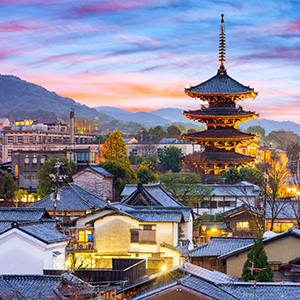
Hakone to Kyoto:
After breakfast, you'll have a private transfer to the Odawara rail station You'll board the Hikari Bullet Train for the 2 hour ride to Kyoto. Your private transfer to your hotel awaits you, and due to the brief train ride, you'll have ample time to explore this mystical city.
Note: Like Tokyo, Kyoto's subway stations have signs posted in Japanese, and Latin alphabet that indicate the next station on the route. Stops are announced in Japanese and English on the train. Their buses also have destinations posted in both Japanese and English, as well as announcing points of interest in English. The new Raku Buses (100 & 101) painted in distinct designs operate on the most popular tourists routes.
(Breakfast, Hakone; Accommodations, Kyoto)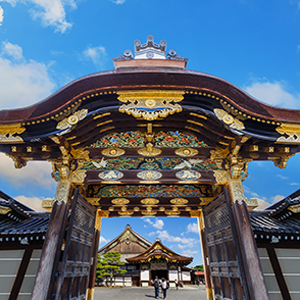
Kyoto:
After breakfast, meet your guide for a full day tour by private car, discovering two jewels of the Kansai region; Kyoto and Nara. You'll start the day with a visit to Kinkakuji Temple (Golden Pavilion), which was originally built as a retirement villa for the Shogun. After his death it became a Buddhist Temple at his request, and is now one of Kyoto's most famous temples. Next is Nijo Castle, an ornamental castle that was built by the founder of the Edo Shogunate as his Kyoto residence and is surrounded by stunning surrounding gardens. The main building was completed in 1603, and is famous for its architecture, decorated sliding doors and chirping, nightingale floors. Then, it's time to transfer to Nara. For 74 years during the 8th century Nara was Japan's capital, and many of the temples and shrines built at that time still remain. We'll visit Todaiji temple, the world's largest wooden building and home to Japan's largest Buddha. Next stop is Nara's most celebrated shrine, Kasuga Taisha, established in 768 AD and famous for its hundreds of bronze and stone lanterns which have been donated by worshipers. The tour will end with a stroll through Nara Park, called Deer Park by locals due to the large population of more than 1,000 tame deer living there.
(Breakfast & Accommodations, Kyoto)
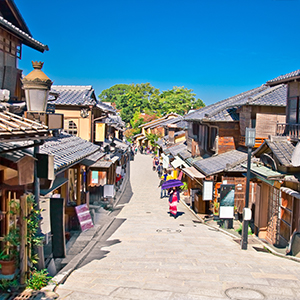
Kyoto:
Your morning is free for independent sightseeing and enjoying lunch on your own. In the afternoon, your taxi will pick you up for a private afternoon at a geisha teahouse. You'll explore the back streets of Kyoto's geisha districts with the leading foreign geisha culture expert, Peter MacIntosh who has spent half his life living in Kyoto. Peter was married to an ex-geisha, studies Japanese arts and is a lecturer on Geisha Studies at a Kansai University. On a private walk through the geisha districts he will discuss the history as well as the present situation of the flower and willow world of Kyoto before stopping at a private, members only ochaya (geisha teahouse). Here you will have matcha green tea and Japanese sweets in the company of a maiko or geiko*. No other customers will be present. In addition, there will be traditional song, dance and games along with great photo opportunities. The entire ceremony will be about 2 hours. Afterwards, you will be dropped off in the geisha district, and at your leisure, return to your hotel via public transportation or taxi.
*Please note this is just drinking tea and sweets with the maiko or geiko, not a tea ceremony, which is a traditional art geisha do not practice.
(Breakfast & Accommodations, Kyoto)

Depart Kyoto:
After breakfast, take a private transfer from your hotel to the rail station. Board the Nozomi Bullet Train to Tokyo then connect with NEX Train to Narita Airport for your flight back to Los Angeles (or other selected city).
*Flights from other U.S. departure cities also available.
(Breakfast, Kyoto)
** Itinerary and inclusions are subject to change

